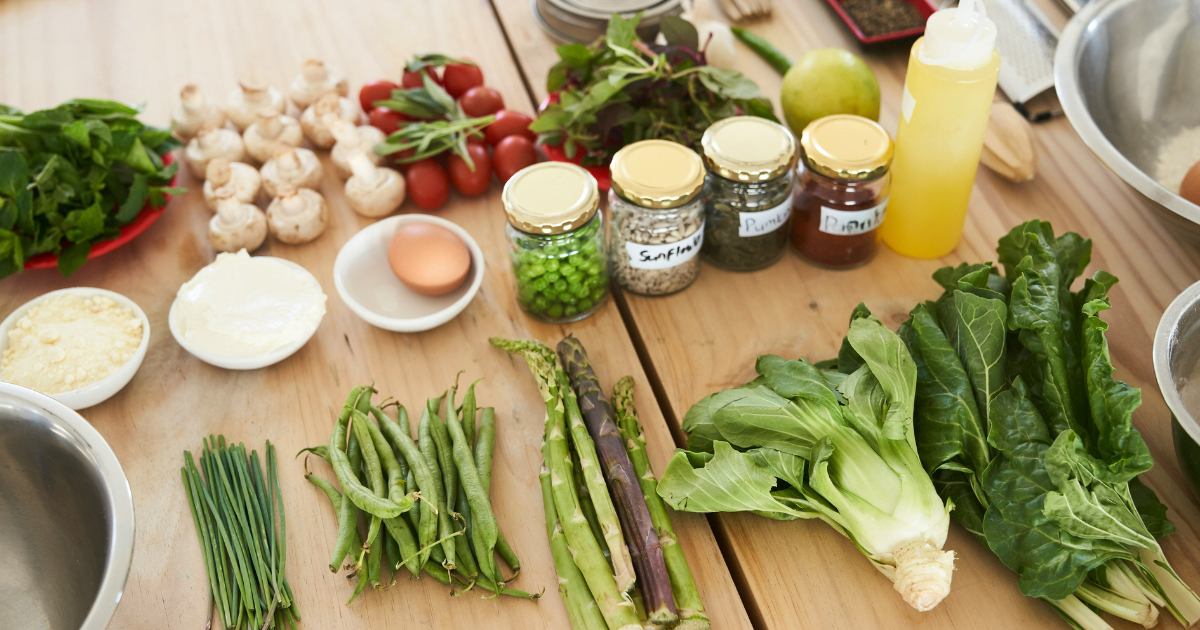How to Make Stir-Fry
 Written by: Steven Luo, First Year Medical Sciences
Written by: Steven Luo, First Year Medical Sciences
Photo credit: Gareth Hubbard, Unsplash
One of the first things I learned at university was how hard it was to find food – specifically, cooked food. In high school, my mom’s cooking was tasty and on time without fail. Here, the food in the dining hall is hit-or-miss and it closes at 7:30 pm. My residence is on the north side, so outside food options are sparse too. Fortunately, my room comes with an en-suite kitchen. Unfortunately, prior to coming to university, the only food I could cook was a hard-boiled egg. Learning to cook for myself was one of the best investments I made this year. Although preparing food generally takes more than an hour, I discovered a dish that takes around half an hour to prepare and cook. Nutritious and quick, stir-fry is perfect for university life.
The longest step to making stir-fry is the preparation, which involves seasoning the meat and washing and cutting the vegetables. However, for a dish like stir-fry, having all the ingredients ready to throw in the pan is essential because cooking time is short and timing is critical. Mistiming can lead to either overcooked meat or vegetables.
Ingredients for 1 serving:
- Four cloves of garlic
- Two stalks of green onions/scallions
- One quarter of a large red onion
- Ginger
- Dried or fresh chili peppers to spice preference
- 1 bell pepper
- Meat (I prefer chicken or beef)
- Salt
- Black pepper
- Olive oil
Preparation:
1. The first thing I do is season the outside of the meat. I like to use a large cutting board. Place the meat on the cutting board. Season both sides with black pepper and salt. To make sure the seasoning is spread evenly, you can use your hand to spread it over the meat.
Tip: Chicken has a lot of natural flavour already, so you don’t have to season chicken very much. However, beef is pretty bland on its own, so season the heck out of it. With beef, you can never use too much black pepper.
2. Next, wash the vegetables. Peel the skin off the onion and garlic; otherwise, there’ll be tough strands of skin in your food. Pare the ginger.
Tip: Peeling garlic can be a pain in the butt. To peel it faster, I recommend chopping the garlic in half first. The skin comes away much easier.
3. Chop the vegetables. I recommend cutting the red onion into thin strips (like the kind you see on burgers). Generally, the finer the garlic, the more flavour it brings to the dish, so try to chop garlic as thinly as possible. Make sure to remove the seeds from the chili and bell peppers.
4. Slice the meat. The thinner the meat, the faster it cooks. If you are dealing with a thicker cut of meat, I recommend placing your knife on the side of the meat and slicing laterally, parallel to the cutting board to split the meat into two thinner slices. For dimensions, I recommend cutting pieces to about a quarter to a half the size of an older AirPods case.
5. If the meat is looking unseasoned, shake another layer of black pepper onto the cut pieces.
Cooking:
6. All your ingredients should be ready to go now. Put your pan on the stove and turn it to medium heat. Pour olive oil into the pan. It’s okay if the pan is cold, you can just let the olive oil sit.
Tip: Use a deeper dish, like a wok, so your stir-fry doesn’t fly out of the pan while you cook.
7. Toss your garlic, chili peppers, and onions evenly into the oil. Their flavour will seep into the oil, which will later add flavour to the meat.
8. Once you start hearing the vegetables sizzle, add the meat into the oil. Stir the meat around so all pieces are in contact with the pan.
Tip: DO NOT overcook your vegetables. If they burn and blacken, your dish will taste like charcoal.
9. Once the meat is almost fully cooked, add the remaining vegetables (bell peppers, onions, ginger).
Tip: Chicken cooks faster than beef. Over medium heat, the chicken should take roughly three to five minutes to cook. Beef should take five to seven. For chicken, wait until the pieces are white all over. For beef, the pieces should be medium brown. I recommend trying a piece of meat to check when it’s ready. Undercooking meat is better than overcooking meat, which makes it very dry. Of course, cook the meat enough so it is safe to eat.
10. If you like your food a little saltier, sprinkle half a teaspoon of salt over the dish right after adding the vegetables.
11. Turn off the heat and enjoy!
Published on

